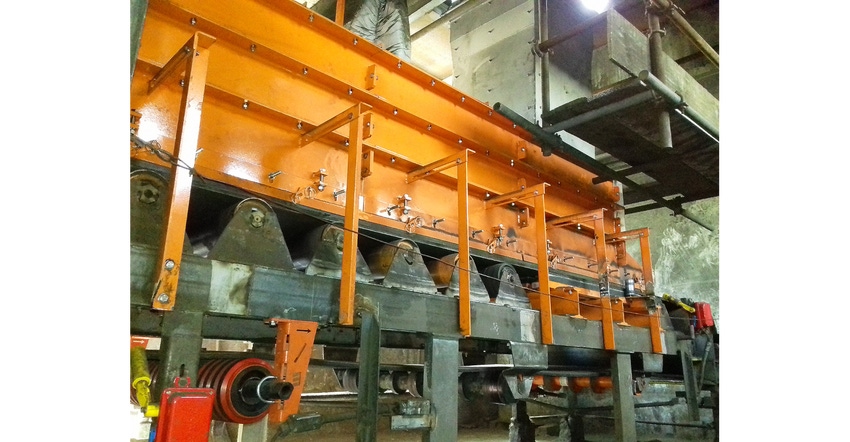Kit offers faster installation and more options.
April 13, 2023

The Martin transfer point kit includes modular horizontal loading zone, settling zone, and stilling zone configurations, providing easier installation and a wider variety of chute options while facilitating future upgrades.
The kit simplifies the installation process, reducing the amount of labor required for assembly and allowing the system to be pre-built prior to installation for reduced system downtime. The result is faster installation with less labor and shorter shutdowns, increasing the return on investment (ROI).
“This is a rugged one-kit solution designed to fit most standard conveyors and belt widths, regardless of what material is being transferred,” said Dave Mueller, conveyor products manager at Martin Engineering. “Our Center for Innovation (CFI) is constantly looking for ways to engineer equipment with safety and our customer’s bottom line in mind. That’s why the kit doesn’t just streamline labor, time, and production, but it’s also a logistical solution by shipping it in one crate.”
The Martin transfer point kit is a heavy-duty horizontal enclosure for the loading zone. Each kit is either ordered as a loading zone, settling zone, or stilling zone. The width and length of the kit are determined by the receiving belt’s width and speed and the dust characteristics of the material being transferred. Dustier applications may require a longer settling zone.
Transfer Point Kit Solves 3 Problems
This innovation solves three common problems. The first is that transfer chutes are normally shipped in different packages that sometimes don’t arrive at the same time. Upon delivery, inventory is stored until scheduled downtime, increasing the chance of loss or misplacement. Another problem is, for most new transfer chutes on the market, some components can be prepared and assembled beforehand, but generally, new chutes need to be completely fabricated during downtime. The inability to build the structure before a shutdown increases the project budget and contributes to lost production time. The third problem is, after construction, horizontal transfer point chutes are commonly a single system that requires significant engineering and construction to be modified. Changes to existing transfer points can be challenging, but to accommodate new belt support equipment or adapt to increases in production, the chute is often raised or lengthened.
To address these problems, the chute sections are: 1) delivered in a single crate with every component for assembly included, 2) able to be assembled prior to the shutdown and installation, saving time and money, and 3) fully modular, making future changes easy without expensive construction projects.
The transfer point system accommodates belt widths of 18-72 in. and an internal chute width of 9-59 in. Each modular section is either 4 or 6 ft long and constructed of mild steel, 304 stainless steel, or 316 stainless steel, with a thickness of 0.25 in., 0.5 in., or 0.75 in. to accommodate a variety of materials and conditions.
The taller loading zone controls air turbulence and connects to both the drop chute and settling zone. When cargo hits a belt with great velocity, fines and lumps splash up the sides of the belt. Without a properly sealed enclosure, the material will spill underneath the conveyor, creating a hazard, restricting access and fouling other components. The settling zone follows the loading zone and helps mitigate dust emissions. Dust is collected, mechanically filtered or settled back into the cargo stream prior to leaving the stilling zone and continuing as a conventional open-air conveyor.
Listed under a single part number, the kit includes a chutewall weldment, wearliner assembly, wearliner plate, outer chute supports, top cover, tail panel/clamp/rubber sheet, installation hardware, and an owner’s manual. The skirt seal is sold separately, since it is a single piece that runs the entire length of the chute and skirting is the most frequently replaced wear part in most transfer points.
Martin Engineering, Neponset, IL 309-852-2384 www.martin-eng.com
About the Author(s)
You May Also Like




